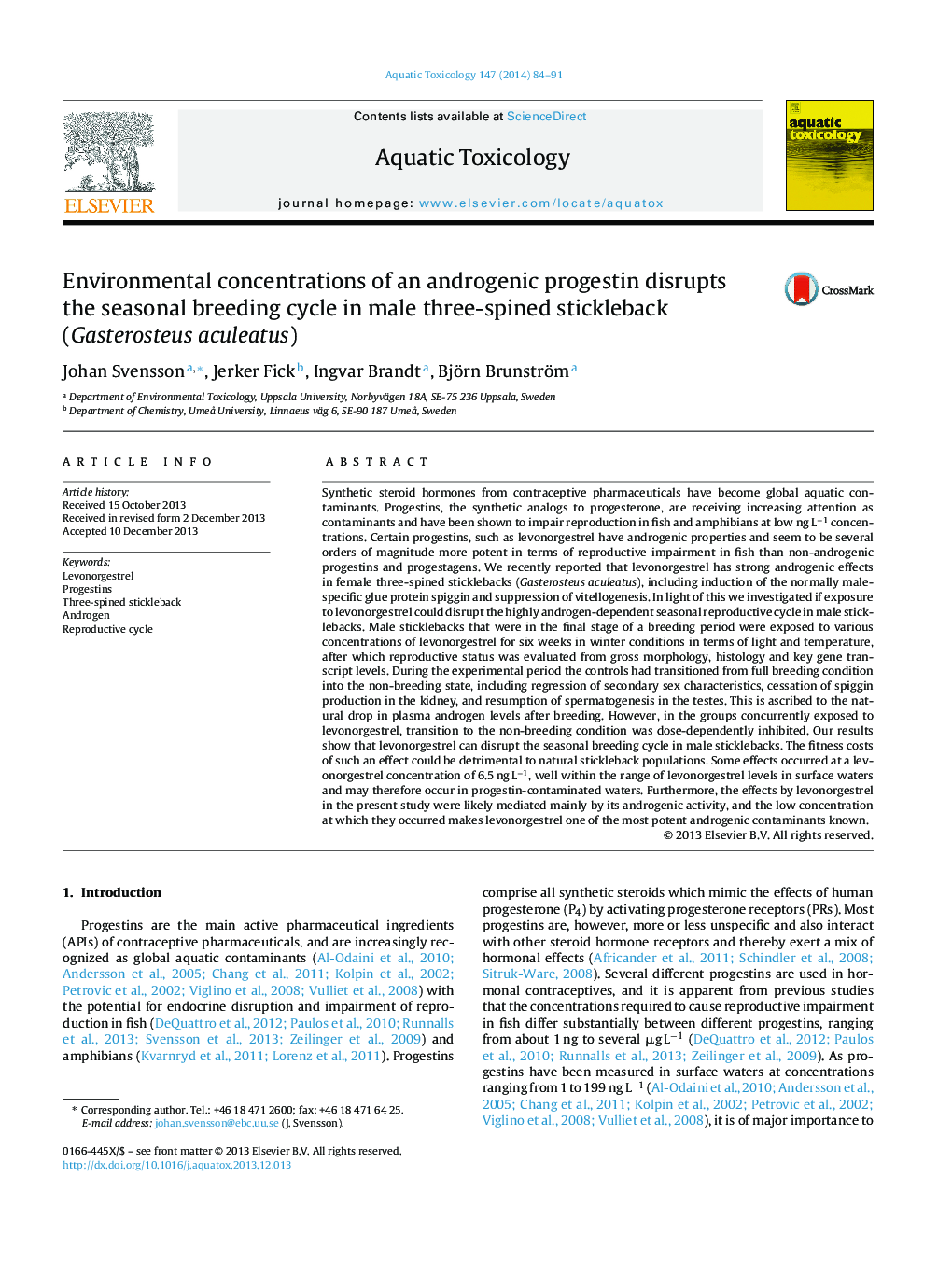| کد مقاله | کد نشریه | سال انتشار | مقاله انگلیسی | نسخه تمام متن |
|---|---|---|---|---|
| 4529405 | 1625958 | 2014 | 8 صفحه PDF | دانلود رایگان |

• Male sticklebacks were exposed to levonorgestrel at the end of a breeding period.
• Levonorgestrel at environmental concentrations maintained fish in breeding condition.
• Results make levonorgestrel an androgenic contaminant of environmental concern.
Synthetic steroid hormones from contraceptive pharmaceuticals have become global aquatic contaminants. Progestins, the synthetic analogs to progesterone, are receiving increasing attention as contaminants and have been shown to impair reproduction in fish and amphibians at low ng L−1 concentrations. Certain progestins, such as levonorgestrel have androgenic properties and seem to be several orders of magnitude more potent in terms of reproductive impairment in fish than non-androgenic progestins and progestagens. We recently reported that levonorgestrel has strong androgenic effects in female three-spined sticklebacks (Gasterosteus aculeatus), including induction of the normally male-specific glue protein spiggin and suppression of vitellogenesis. In light of this we investigated if exposure to levonorgestrel could disrupt the highly androgen-dependent seasonal reproductive cycle in male sticklebacks. Male sticklebacks that were in the final stage of a breeding period were exposed to various concentrations of levonorgestrel for six weeks in winter conditions in terms of light and temperature, after which reproductive status was evaluated from gross morphology, histology and key gene transcript levels. During the experimental period the controls had transitioned from full breeding condition into the non-breeding state, including regression of secondary sex characteristics, cessation of spiggin production in the kidney, and resumption of spermatogenesis in the testes. This is ascribed to the natural drop in plasma androgen levels after breeding. However, in the groups concurrently exposed to levonorgestrel, transition to the non-breeding condition was dose-dependently inhibited. Our results show that levonorgestrel can disrupt the seasonal breeding cycle in male sticklebacks. The fitness costs of such an effect could be detrimental to natural stickleback populations. Some effects occurred at a levonorgestrel concentration of 6.5 ng L−1, well within the range of levonorgestrel levels in surface waters and may therefore occur in progestin-contaminated waters. Furthermore, the effects by levonorgestrel in the present study were likely mediated mainly by its androgenic activity, and the low concentration at which they occurred makes levonorgestrel one of the most potent androgenic contaminants known.
Journal: Aquatic Toxicology - Volume 147, February 2014, Pages 84–91